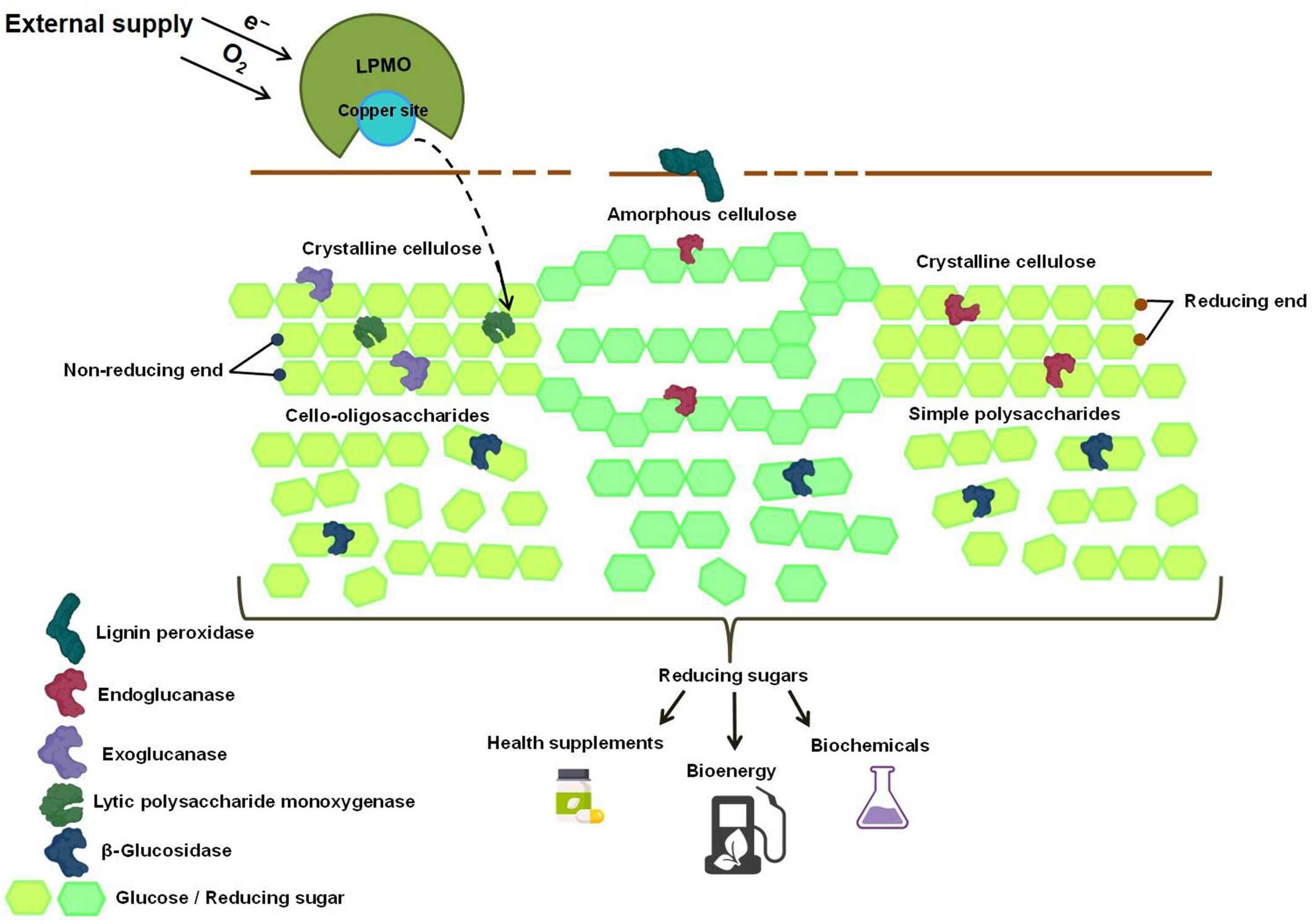The upsurge of lytic polysaccharide monooxygenases in biomass deconstruction: characteristic functions and sustainable applications

The upsurge of lytic polysaccharide monooxygenases in biomass deconstruction: characteristic functions and sustainable applications
Asheesh Kumar, Aishwarya Singh, Vijay Kumar Sharma, Akshita Goel, Arun Kumar
Abstract
Lytic polysaccharide monooxygenases (LPMOs) are one of the emerging classes of copper metalloenzymes that have received considerable attention due to their ability to boost the enzymatic conversion of intractable polysaccharides such as plant cell walls and chitin polymers. LPMOs catalyze the oxidative cleavage of β-1,4-glycosidic bonds using molecular O2 or H2O2 in the presence of an external electron donor. LPMOs have been classified as an auxiliary active (AA) class of enzymes and, further based on substrate specificity, divided into eight families. Until now, multiple LPMOs from AA9 and AA10 families, mostly from microbial sources, have been investigated; the exact mechanism and structure–function are elusive to date, and recently discovered AA families of LPMOs are just scratched. This review highlights the origin and discovery of the enzyme, nomenclature, three-dimensional protein structure, substrate specificity, copper-dependent reaction mechanism, and different techniques used to determine the product formation through analytical and biochemical methods. Moreover, the diverse functions of proteins in various biological activities such as plant–pathogen/pest interactions, cell wall remodeling, antibiotic sensitivity of biofilms, and production of nanocellulose along with certain obstacles in deconstructing the complex polysaccharides have also been summarized, while highlighting the innovative and creative ways to overcome the limitations of LPMOs in hydrolyzing the biomass.
Journal: FEBS Journal (IF 5.6)